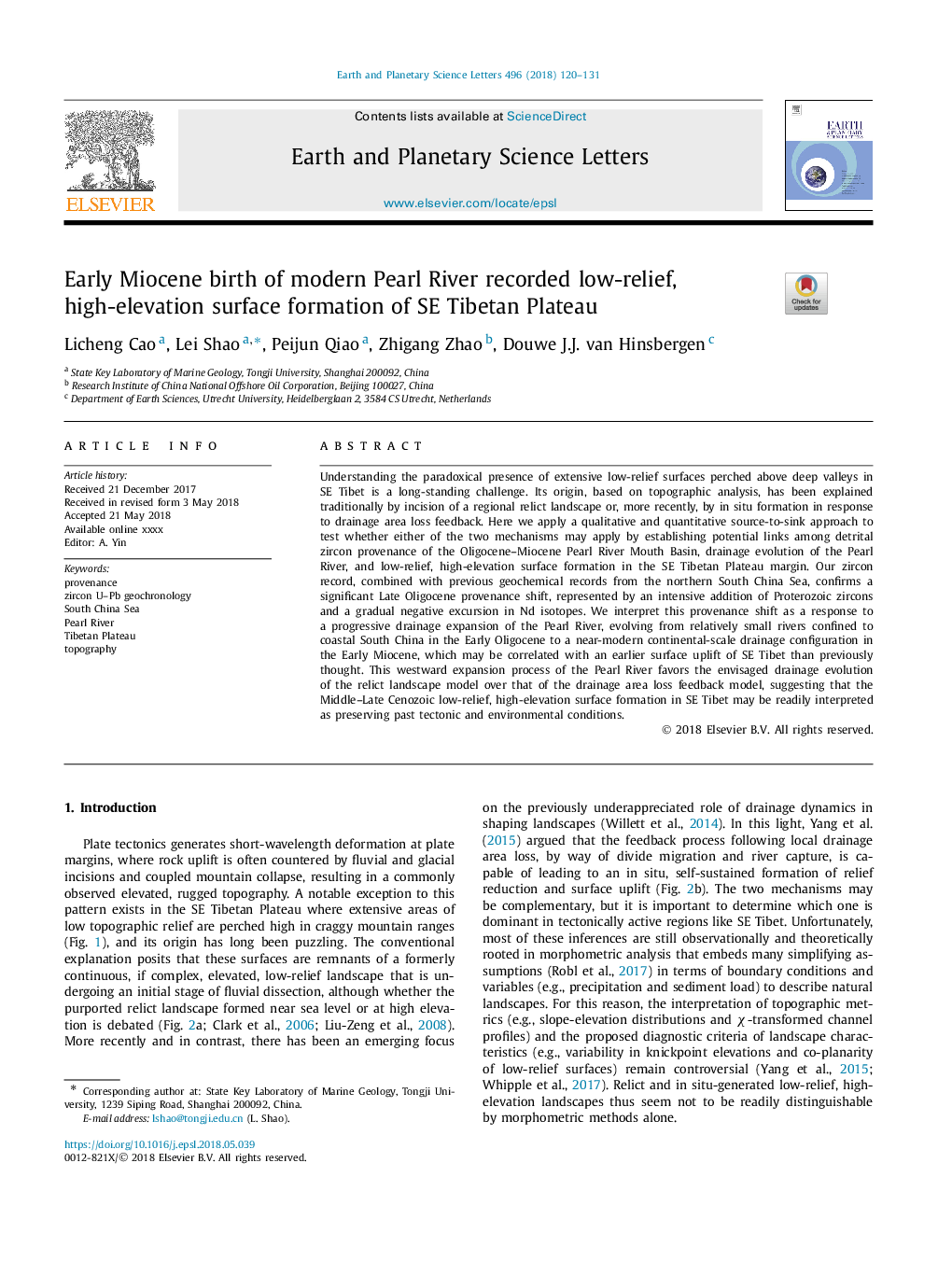| Article ID | Journal | Published Year | Pages | File Type |
|---|---|---|---|---|
| 8906776 | Earth and Planetary Science Letters | 2018 | 12 Pages |
Abstract
Understanding the paradoxical presence of extensive low-relief surfaces perched above deep valleys in SE Tibet is a long-standing challenge. Its origin, based on topographic analysis, has been explained traditionally by incision of a regional relict landscape or, more recently, by in situ formation in response to drainage area loss feedback. Here we apply a qualitative and quantitative source-to-sink approach to test whether either of the two mechanisms may apply by establishing potential links among detrital zircon provenance of the Oligocene-Miocene Pearl River Mouth Basin, drainage evolution of the Pearl River, and low-relief, high-elevation surface formation in the SE Tibetan Plateau margin. Our zircon record, combined with previous geochemical records from the northern South China Sea, confirms a significant Late Oligocene provenance shift, represented by an intensive addition of Proterozoic zircons and a gradual negative excursion in Nd isotopes. We interpret this provenance shift as a response to a progressive drainage expansion of the Pearl River, evolving from relatively small rivers confined to coastal South China in the Early Oligocene to a near-modern continental-scale drainage configuration in the Early Miocene, which may be correlated with an earlier surface uplift of SE Tibet than previously thought. This westward expansion process of the Pearl River favors the envisaged drainage evolution of the relict landscape model over that of the drainage area loss feedback model, suggesting that the Middle-Late Cenozoic low-relief, high-elevation surface formation in SE Tibet may be readily interpreted as preserving past tectonic and environmental conditions.
Related Topics
Physical Sciences and Engineering
Earth and Planetary Sciences
Earth and Planetary Sciences (General)
Authors
Licheng Cao, Lei Shao, Peijun Qiao, Zhigang Zhao, Douwe J.J. van Hinsbergen,
